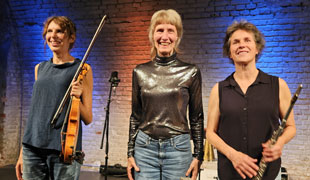
In the previous entry of this series, we examined the profession of the English navigator Sir Robert Dudley (1574–1649). This concluded with a discussion of the scientific instruments he bequeathed, which are now housed in the Museo Galileo in Florence. These instruments originated from multiple different makers, and today I will focus on one not yet addressed in this series, James Kynvyn (c. 1550–1621).
James Kynvyn does not quite conform to the typical profile of other English instrument makers from the latter half of the sixteenth century. As is frequently the case, details about Kynvyn’s early life are scant. The information we possess is primarily extracted from his will, in the name of Jacobus Kynvin, dated September 1615. In this document, he is identified as a citizen and Merchant Taylor of London. This is rather atypical; Thomas Gemini (c.1510–1562) was an engraver upon his arrival in England and only later became an instrument maker. Humfrey Cole (c. 1530–1591), a goldsmith, worked at the Royal Mint as an engraver before venturing into instrument making as a secondary pursuit. Both Gemini and Cole also produced engraved maps. Augustine Ryther (fl. 1576–1593) was more renowned as an engraver than as an instrument maker and is chiefly recognized for his engraved maps rather than his devices. We possess a total of twelve extant instruments attributed to Kynvyn, but no maps or engravings. Additionally, the relatively inferior quality of the calligraphy on his earliest instruments suggests that he was not initially a particularly adept engraver.
The Court Minutes of the Merchant Taylor Company, dated 26 October 1573, state:
“First the Mr [Master] and Wardens aforesaide at the contemplacon of my Lord Mayor his Honour and the request of Sir Thomas Offley Knight have made free James Kynvyn per redempcon gratis.”
Offley, being a former Lord Mayor, implies that Kynvyn was recognized by the Company upon the recommendation of esteemed City officials. This indicates that either he or his family held high standing. This notion is further validated by the Will of John William Kynvyn, dated 1617, who is presumably James’ brother, which refers to him as ‘gentleman’. James is mentioned in the Will alongside another brother, Edward Job. James Kynvyn’s union with Elizabeth Coke at St Michael Bassishaw church is recorded in the church register from January 1574. His home parish was Llantilio in Monmouthshire, and at the time of his passing, he resided in ‘my dwelling house in Fleet Street London.’ All of this suggests that Kynvyn was distinct from his contemporaries in the field of instrument making. They were skilled craftspeople who learned their skills from an early age, while Kynvyn appeared to originate from a more elevated social class of the time, and there is no clarity regarding how or why a tailor transitioned to becoming a scientific instrument maker.
Only twelve instruments made by Kynvyn still exist, all produced within the ten years following the earliest known date of 1593. This would imply that he was about forty when he began making instruments, and he lived for another twenty years after ceasing his work. We have no insight into the reasons behind his timing in starting or stopping after such a relatively short duration.
The sole additional source of information regarding Kynvyn is a note penned by the Elizabethan critic and poet, Gabriel Harvey (1545–1631), in his copy of The Mathematical Jewel (1585) by John Blagrave (d. 1611):
“His [Blagrave’s] familiar staff, newly published this 1590. The Instrument itself made and sold by M. Kynuin of London neere Powles. A fine workman and mie kind frend: first commended unto me bie M. Digges, & M. Blagraue himself. … Mr Kynvyn selleth ye Instrument in brasse.”
In that same note, Harvey also makes reference to ‘old Humfrie Cole.’
‘neere Powels’ refers to the area around St Paul’s Cathedral, and M. Digges is indeed Thomas Digges (c. 1546–1595).
The earliest dated instrument by Kynvyn that has survived is a compendium crafted for Robert Devereux, 2nd Earl of Essex (1565–1601), who was a favorite of Queen Elizabeth and a quasi-stepbrother to Robert Dudley.
Robert Dudley’s father, Robert Dudley, 1st Earl of Leicester, who never wed Robert Devereux’s mother, was the second husband of Lettice Knollys (1543–1634), Robert Devereux’s mother.
The compendium has